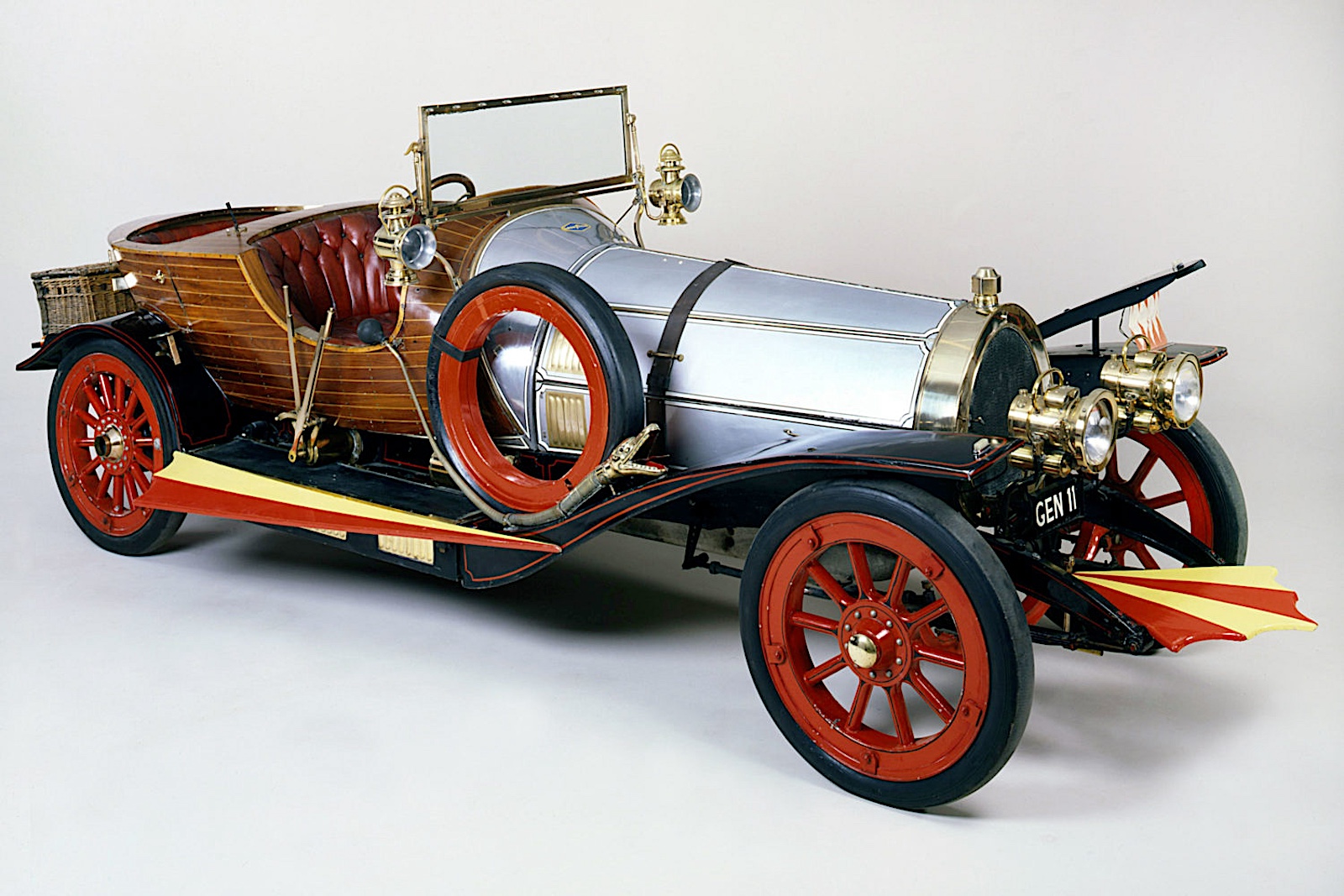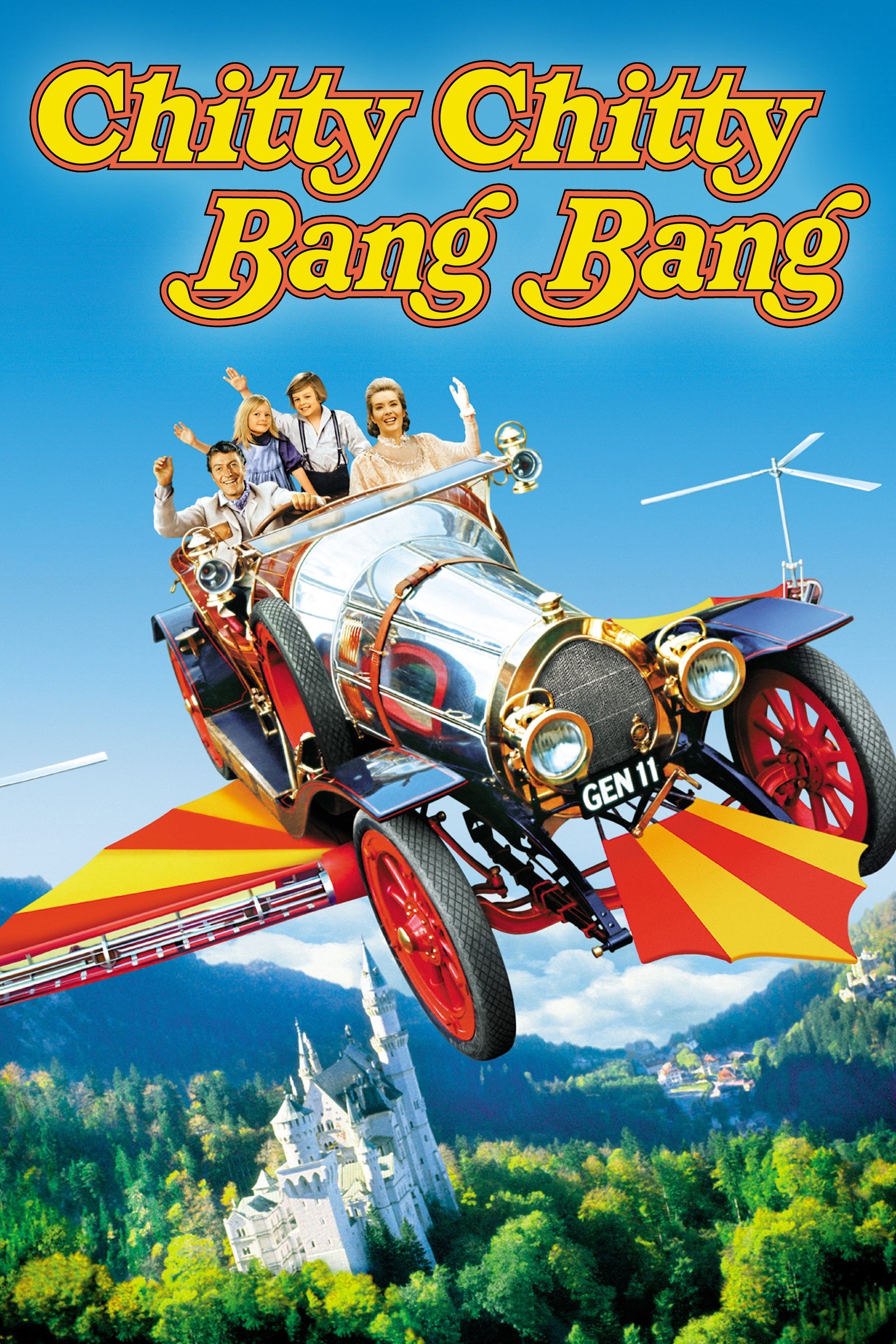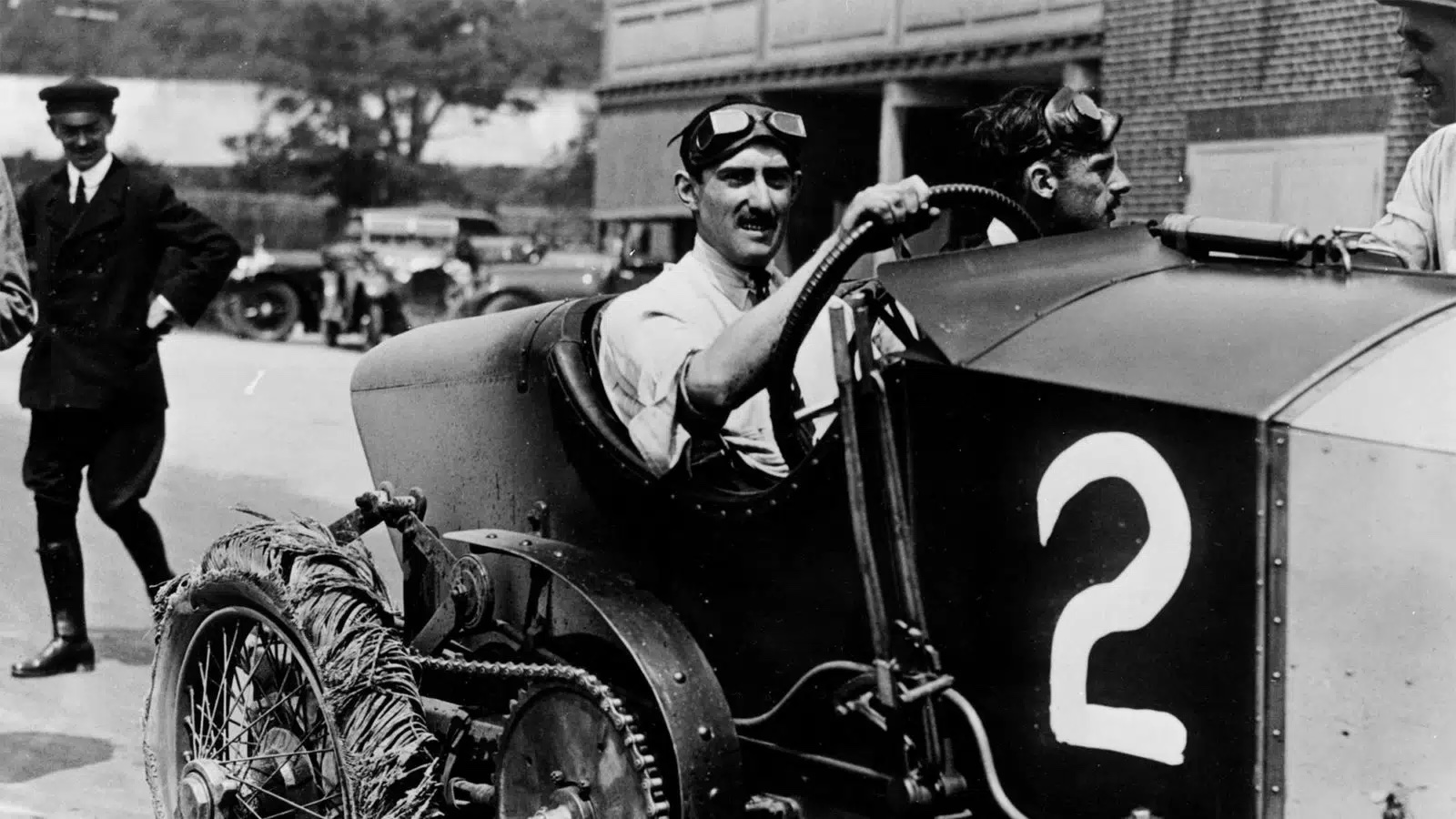It seems like just another innocuous children’s film.
Titled Chitty Chitty Bang Bang, this 1968 British musical hit theatres this week in 1968 starring Dick Van Dyke and Sally Ann Howes. The film concerns a down-on-his-luck inventor who turns a broken-down Grand Prix car into a flying, floating, self-driving car for his children. Produced by United Artists and producer Albert Broccoli, who handled the James Bond films – it cost of $10.5 million. It proved to be a critical failure, which is perhaps it realized a mere $11 million at the box office.
Yet this is more than just celluloid pablum for children. The film is based on the only children’s book written by James Bond creator Ian Fleming for his son Casper. In the book, Fleming writes that Chitty Chitty Bang Bang is, “a twelve-cylinder, 8-liter, supercharged Paragon Panther; they only made one of them, and then the firm went broke.”
Furthermore, the story isn’t a total fabrication, as it’s based on real English race cars built by Count Louis Zborowski.
COUNT WHO?
The son of the racing driver William Eliot Morris Zborowski, and Margaret, the wealthy granddaughter of William B. Astor, Sr., Louis Zborowski is born in 1895. But a crash during French race in 1903 kills the elder Zborowski when Louis is eight. Tragically, he would lose his mother to cancer eight years later.
With her passing at the tender age of 16, he becomes one of the world’s wealthiest teenagers. But the apple doesn’t fall far from the tree.
Louis loves racing cars as well as driving them. Collecting a fleet of British cars with the help of engineer Captain Clive Gallop, he names two of them Chitty Bang Bang and Chitty Chitty Bang Bang. The names didn’t come from their noise, but something a bit less proper. When soldiers left the front during World War I, they were given a chit to leave, whereupon they’d go and have sex. The car names were little more than Zborowski’s idea of a joke. But the car’s themselves were not, and one of them still exists.
Built in 1921 using a 1910 Mercedes chassis, it’s powered by an 18.8-liter (1,152 cubic-inch) World War I British aircraft engine using chain drive. That propelled it to 108.27 mph at Brookslands. This is the car that Fleming saw as a child, and it’s part of late New Hampshire Motor Speedway Chairman Bob Bahre’s collection in Maine.
As for Zborowski, his ultimate goal is to drive for Mercedes. He finally realizes his dream in the 1924 Italian Grand Prix at Monza. But on the 44th lap, he is killed at the age of 29 after losing control of his car.
But James Bond author Ian Fleming had seen the famous cars at Brooklands in his youth. Upon seeing one of Zborowski’s cars later in life, it inspires him to write his final novel, Chitty Chitty Bang Bang. It would be his only children’s book, written while recuperating from a heart attack. It was published in October 1964, two months after he dies at age 57, on his son’s 12th birthday.
THE FILM CAR
The car used in the film is a recreation of the original, tipping the scales at two tons and measuring 17 feet long. Built using a Ford Zodiac Essex 3.0-liter V6 engine with automatic transmission, many traditional British coachbuilding techniques are used in Chitty Chitty Bang Bang’s construction.
The car’s alloy wheels are molded to replicate the timber wheels. Its wood deck is from red and white cedar and constructed by boat-builders in Windsor. The alloy dashboard plate comes from an English World War I fighter plane. While this car is drivable, other non-driving replicas were manufactured by the Ford Racing Team for other scenes in the film.
Regardless of what you think of the novel or the film, who could imagine that decades later, automakers would be chasing the same dream of a flying or self-driving car? Yet the reality of such vehicles remains as elusive as the film’s profits.






0 Comments